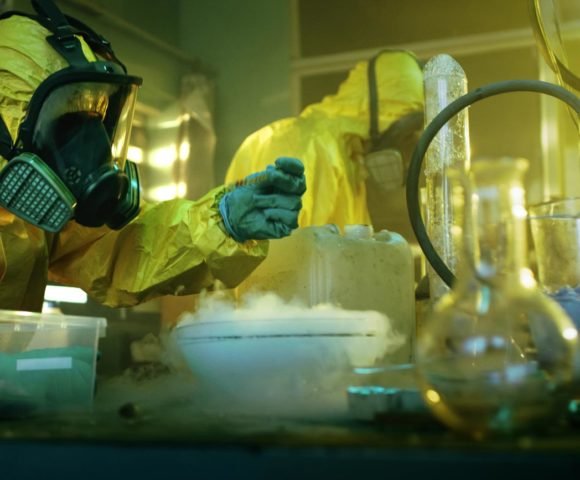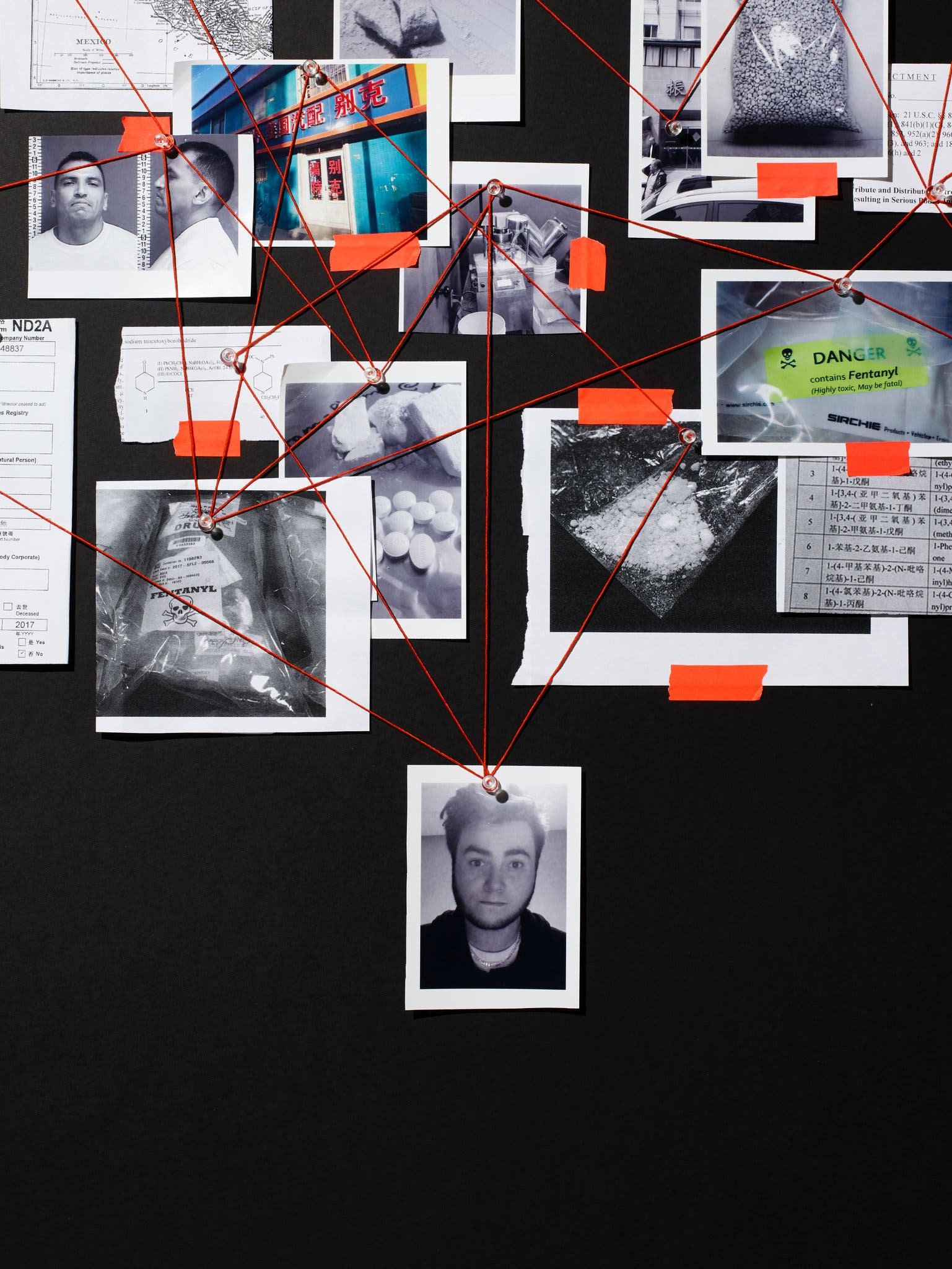
12-year-old Boy Dies After Cleaning Uncle's Drug Paraphernalia
In a somber event from March 2022 in Blackwood, New Jersey, a 12-year-old boy tragically lost his life due to a suspected fentanyl overdose. Troy Nokes, 35 who is the boys uncle is in custody for allegations related to the boy's exposure to fentanyl.
According to the Camden County Prosecutor’s Office and the Gloucester Township Police, Nokes faces charges including aggravated manslaughter. Fentanyl intoxication was identified as the cause by the Philadelphia Medical Examiner’s Office.
In a somber event from March 2022 in Blackwood, New Jersey, a 12-year-old boy tragically lost his life due to a suspected fentanyl overdose. Troy Nokes, 35 who is the boys uncle is in custody for allegations related to the boy's exposure to fentanyl.
According to the Camden County Prosecutor’s Office and the Gloucester Township Police, Nokes faces charges including aggravated manslaughter. The 12 year old boy was found unresponsive on a school bus and passed away shortly after. Fentanyl intoxication was identified as the cause by the Philadelphia Medical Examiner’s Office.
Investigators revealed that the young boy may have come into contact with fentanyl under Nokes' direction. Joanna Johnson, Nokes' partner, also faces charges.
The heartbroken grandmother of the deceased is grappling with her grandson's untimely passing and the subsequent arrest of a family member. Both Nokes and Johnson are awaiting legal proceedings at the Camden County Correctional Facility. Authorities encourage those with relevant information to reach out, even anonymously, at ccpotips@ccprosecutor.org.
THE UNTOLD STORY: REMEDIATING A TOXIC DRUG DWELLING FOR SAFE REENTRY
What people aren’t aware of is the tragic consequences of overdoses don’t end merely with a user’s death. Wherever a person has engaged in illicit fentanyl use, the dwelling may become a hazardous waste site. Even inhaling a speck of the drug can prove deadly.
THE UNTOLD STORY
The heart-wrenching stories of how heroin, cocaine and opioid addiction is taking lives and devastating those in the wake of overdoses are all too familiar. Today, users and law enforcers are grappling with an unprecedented crisis fueled by a lesser-known but even more lethal substance: synthetic fentanyl sold on the black market.
Up to 50 times more powerful than heroin, pharmaceutical fentanyl began with noble intentions. It was first developed in 1959 as an intravenous pain treatment. However, in the last decade, consumption of illicit fentanyl—smuggled to the U.S. from Mexican drug cartels and Chinese labs—ranks as one of the leading causes of death here, greater than fatalities caused by car crashes, HIV or gunshot wounds.
In September 2021, the Drug Enforcement Administration reported more than 93,000 people died of a drug overdose in the U.S. in 2020, an increase of 30 percent from the previous year. It blames the rise on the increased use of fentanyl sold on the streets. Illicit fentanyl can range from pharmaceutical fentanyl resold on the streets to illicit labs producing a variety of fentanyl analogs. Currently the most lethal analog is carfentanil, which is 10,000 times more potent than morphine and 100 times more potent than pharmaceutical fentanyl. It’s becoming a commonly recognized national disaster of epic proportion that spans all socio-economic backgrounds. However, addiction affects more than just its victims and those close to them.
The Untold Story for Hotel and Lodging Owners
What people aren’t aware of is the tragic consequences of overdoses don’t end merely with a user’s death. The untold story: wherever a person has engaged in illicit fentanyl use, the dwelling may have become a hazardous waste site. Even inhaling a speck of the drug can prove deadly. The ramifications impact all who come in contact with the property—from first responders to those tasked with cleaning up. At one site in Northern California, a house cleaner hired to clean a home died within minutes after coming into contact with fentanyl.
For those engaged in the hotel and lodging industry sector, the stakes are especially high. Education is key to keep cleaning staff and guests safe. There are a myriad of issues: testing by the local health governing agency, hiring certified industrial hygienists and workers skilled at hazardous cleanups and disposal. Insurance is also a factor to consider.
But what’s most important is to hire a crew of professionals to get the job done safely.
“If property owners are blindsided by a fentanyl death and do not take the correct steps, guests or employees could also be tragically exposed and lead them wide open to possible lawsuits.” says Jon Schibsted, owner of Safety Services Management (SSM), a Southern California-based company that specializes in fentanyl cleanup.
The Danger of Fentanyl
Schibsted notes that because fentanyl is a cheap drug for mixing with other narcotics, its reach is widespread. “Not only are drug dealers pressing their own pills, but they are also cutting illicit fentanyl into other drugs to increase their effect,” he says. “The danger is that this is occurring in hotel rooms, apartments, houses, garages and storage facilities which can cause widespread contamination of a site that anyone of us can be exposed to.”
Local public health units may respond to a fentanyl overdose and often red tag the property until all traces of fentanyl are removed. Some agencies will give the owner a packet that includes information about contractors approved to do this specialized remediation cleanup, but often times, the property owner is left on their own to find the appropriate resources.
“The cost is huge,” says Dwane Pianalto, who is a Southern California Registered Environmental Health Specialist (R.E.H.S.). “Such a substantial cost for a hotel, for example, means loss of income. If a site is red tagged, the law says no further occupation is allowed until the remediation is completed. The whole process could take up to 90 days.”
Creating a Site Assessment
Once a site has been red tagged due to fentanyl, a Preliminary Site Assessment is created by a trained professional such as an industrial hygienist. The hygienist will take samples of the site and provide recommendations on cleaning. “We prefer to work directly with the hygienist at the beginning of the process to ensure they sample the site to paint a clearer picture of what needs to be cleaned,” says Schibsted. “If it isn’t done correctly, it can lead to a much higher cleanup cost.”
Joe McCaffrey, a certified industrial hygienist, explains the process as a series of time consuming, but incredibly important steps, “Various surfaces inside the residence, are sampled for fentanyl contamination. Sampling usually includes walls, floors, furniture, appliances, HVAC systems, and areas that appear to have been impacted by pill presses, smoking, or drug cooking activities. Those samples are then analyzed by an accredited lab which provides the results of contamination. When fentanyl is in powder form, I advise washing all surfaces with a decon solution such as Decon7 or Dahlgen, an oxidation-based cleaner, then using a vacuum with HEPA filters to remove any remaining small particles. Then we test again to make sure the property is safe to reoccupy."
The Nightmare Remediation
The whole process can be a nightmare says San Diego resident Greg Gleeson who with his brother in Orange County own 200 rental units in Southern California.
“We got a call from our property manager in San Bernardino that the city had closed down a unit because two people overdosed and a third was rushed to the hospital,” he says. “I showed up and there were people in hazmat suits, and I thought, was my tenant making nuclear bombs or something? Then the police told me that these guys were cutting fentanyl pills in the apartment. They likely inhaled, and it killed them.”
Gleeson said that started him for “a dunk in the deep end.” The property was impounded and red tagged by the fire department and it was determined that it needed a complete remediation by a professional crew. “That’s when I discovered that a small amount of fentanyl like a grain of salt is lethal” he says. He had to move people out of adjoining units, which meant a hit in income for rentals. He also had issues with his insurance coverage that rarely covers damages from drug abuse.
As for his recommendations to other property owners, Gleeson says, “So much of fentanyl is coming through Mexico, so Southern California is being hit the worst. More is coming in, so be prepared. Check your insurance, have a rolodex of cleaning crews, and be ready to hire one for $30,000 plus to fix the whole mess.”
When it comes to keeping your hotel operational, preparing for the worst before it happens can help you keep staff and guests safe, and help keep your hotel in business.
Author Information
Dan Ouellette is a free-lance journalist and author who has covered a range of topics in his decades long career based in San Francisco and since 1999 a resident of New York City. In California he reported on such stories as the dire work at Oakland’s Highland Hospital Emergency Room and how the building of a jazz club in Oakland helped the city resurrect a district that had been neglected. He also wrote about the cultural history of the Volkswagen Beetle that grew into a book on its history, its social impact and its new life as the New Beetle in 1998 (The Volkswagen Beetle Book). In New York, Ouellette largely turned his attention to the jazz scene of the city and international festivals. He was a writer, editor and teacher at City College. He wrote two biographies, Ron Carter: Finding the Right Notes (a story about jazz’s greatest bass player), and Bruce Lundvall: Playing by Ear (about the one of the music industry’s most brilliant ears for signing star artists ranging from Herbie Hancock to Norah Jones). In addition to contributing to different magazines and online publications, Ouellette produces a monthly music column, Jazz & Beyond Intel, on his website: danouellette.net. He can be reached at danouell33@gmail.com.
About Safety Services Management: Safety Services Management was founded by Jon Schibsted, a former firefighter for Los Angeles who received extensive training to become a Hazmat Specialist, and consists of a team of ten emergency response specialists who can quickly respond whenever a property owner calls for assistance remediating a hazmat situation.
































The 2025 Southern California wildfires left many buildings contaminated by toxic smoke, even those far from burn zones. Readers will learn about the dangers of wildfire smoke, which contains hazardous particles like heavy metals, asbestos, VOCs, and carcinogens, posing serious health risks and causing structural damage. The article explains how smoke affects health, damages property, and outlines the steps needed for professional remediation to restore safety.